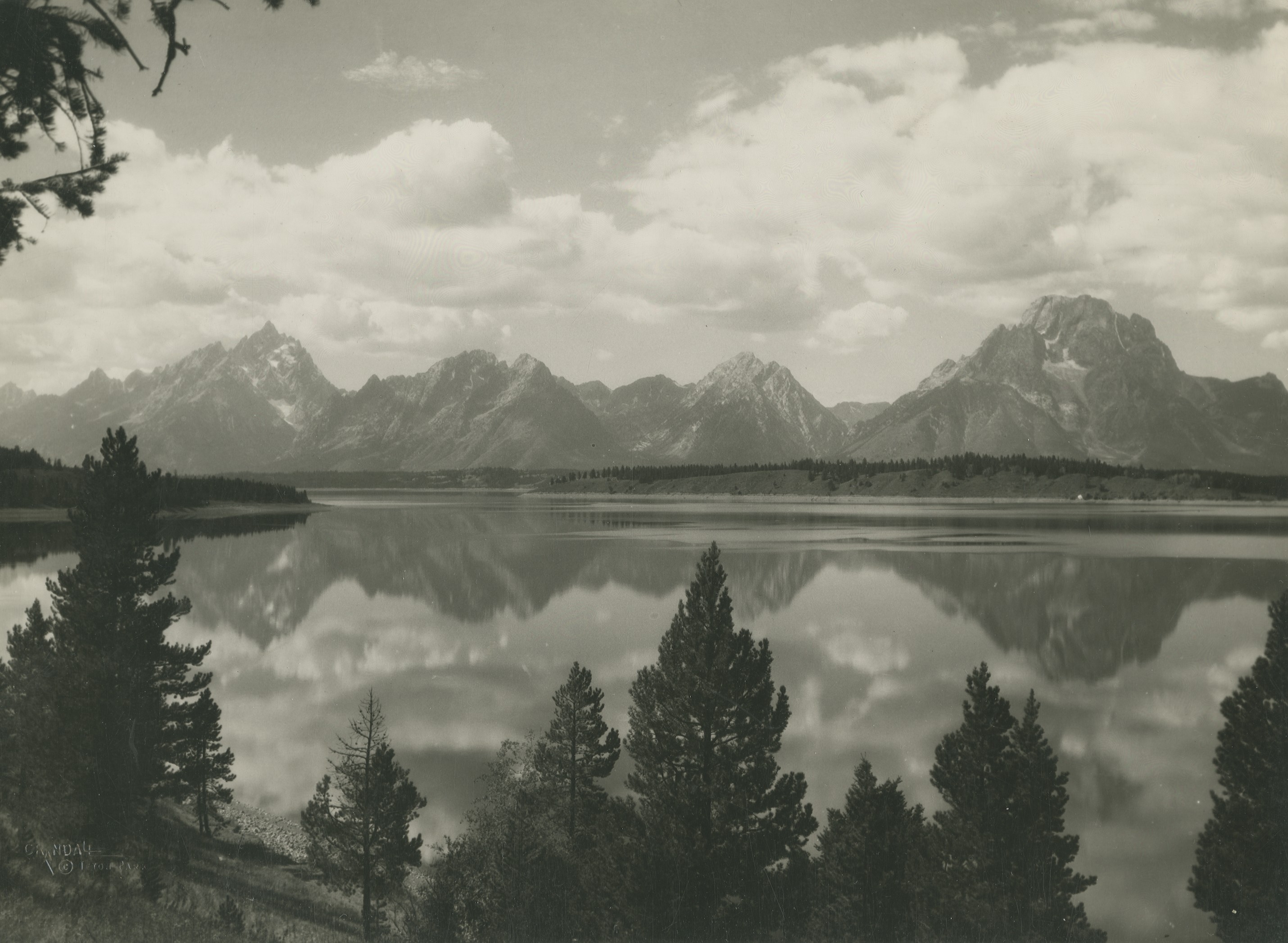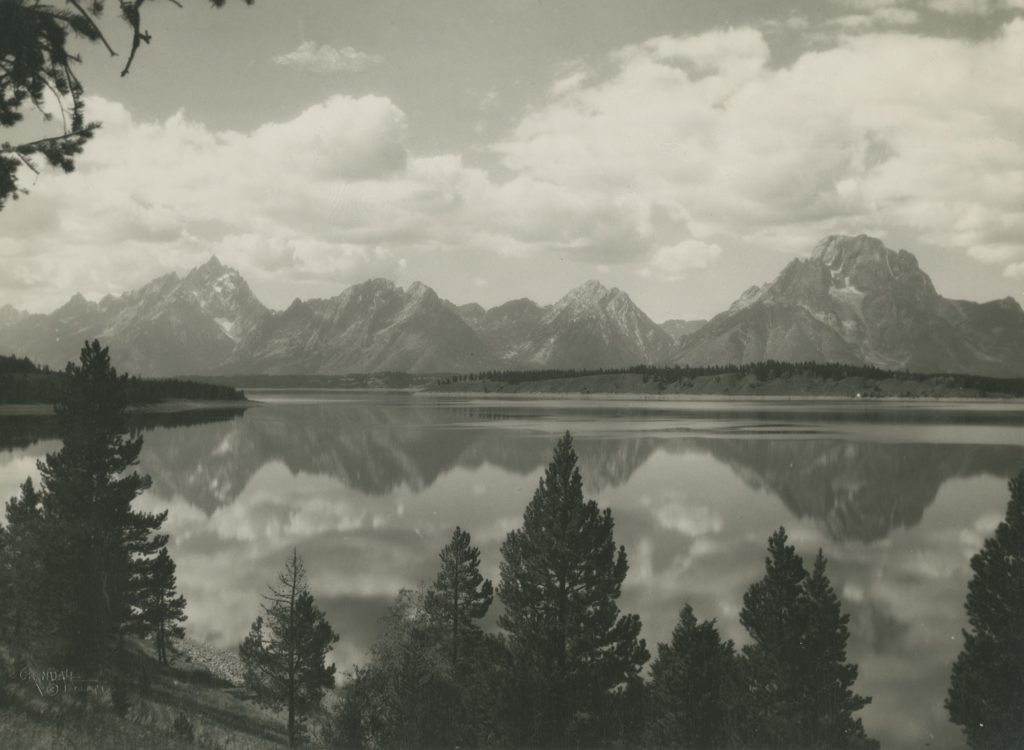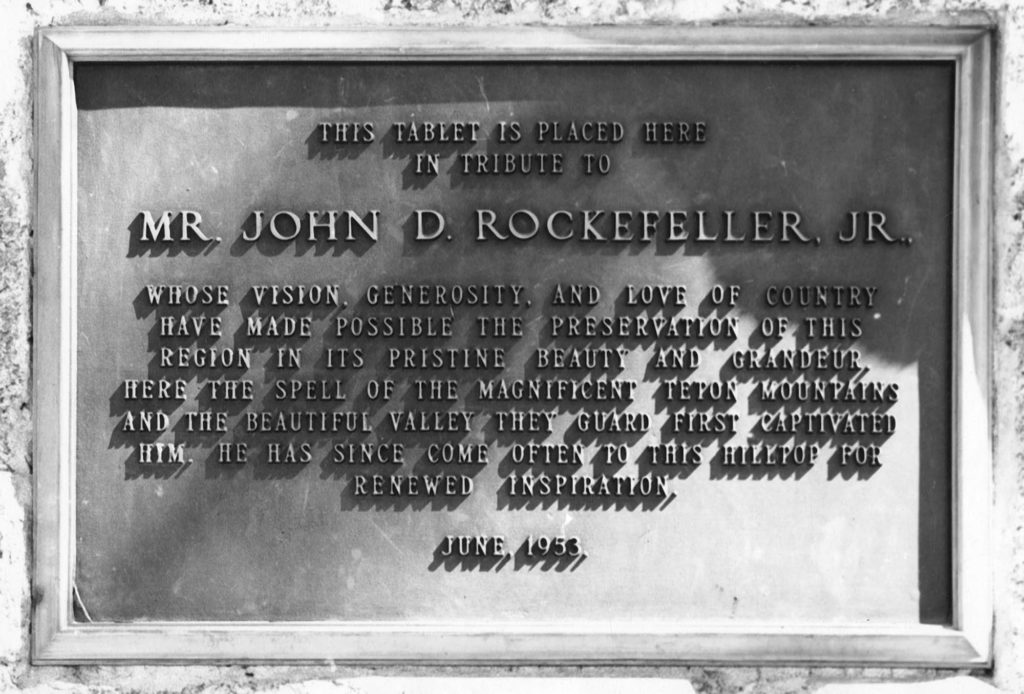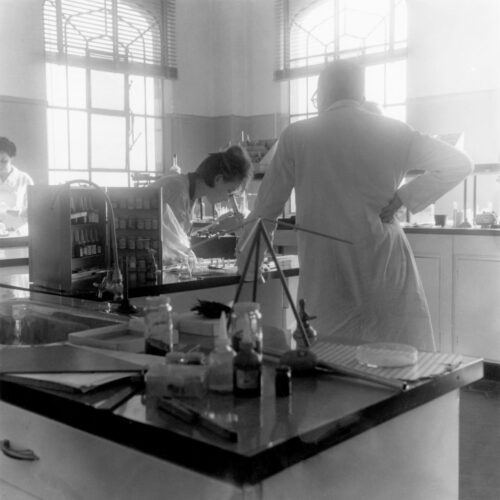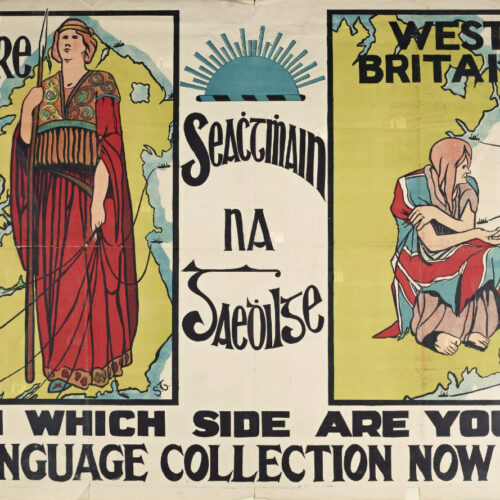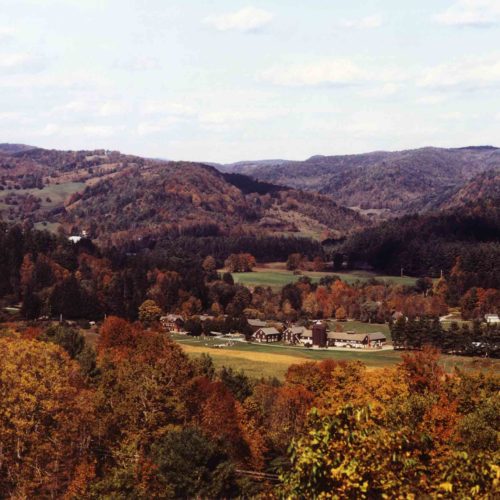A Visit to Jackson Hole
In 1926, John D. Rockefeller, Jr. visited Jackson Hole, Wyoming, a valley adjacent to the Grand Teton Mountain Range, with Horace M. Albright, Superintendent of Yellowstone National Park and an assistant to the director of the National Park Service (NPS).
The visit triggered one of the most controversial conservation episodes in American history, setting off roughly two decades of discord between local and federal stakeholders regarding Wyoming’s national parkland. In the end, a successful outcome was reached with the creation of the 310,000-acre Grand Teton National Park. The park as we know it today might not exist were it not for Rockefeller’s initial visit.
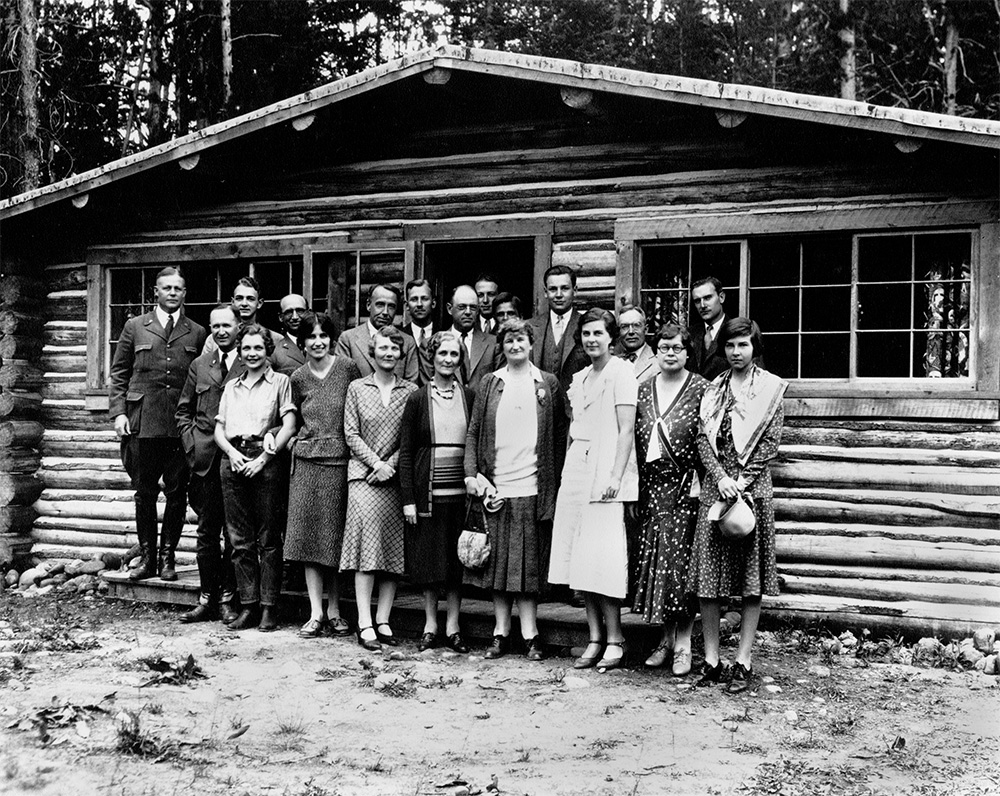
“A Museum on the Hoof”
For roughly ten years, Albright had tried to conserve the Teton area as a national park. Local ranchers initially opposed the plan, concerned it would restrict their grazing rights.
By the early 1920s, however, the ranchers had become increasingly alarmed by Jackson Hole’s growing commercialization. Gas stations, dance halls, billboards, telephone lines, small hotels, and even a bootleg whiskey bar were a blight on the region’s natural beauty.National Park Service, “Grand Teton: Historical Resource Study,” July 24, 2004.
The destiny of Jackson Hole is as a playground, typical of the west, for the education and enjoyment of the Nation as a whole.
1925 petition circulated by Jackson Hole ranchers
In addition, the ranchers had come to view dude ranches (lodges meant to introduce outside visitors to a rustic western lifestyle) as a potentially valuable form of tourism. As such, they hoped to preserve Jackson Hole’s “Old West” characteristics so that visitors might enjoy a true “cowboy” experience. The goal, in the words of local dude rancher Struthers Burt, was to preserve Jackson Hole as a “museum on the hoof.”National Park Service, “Grand Teton, National Park, Wyoming: Cultural History.”
Albright met with Burt and five other local businessmen and ranchers to devise a plan: they would find a buyer to purchase — and then preserve — private lands in Jackson Hole.National Park Service, “Creation of Grand Teton National Park: A Thumbnail History,” January 2000.
After his visit, John D. Rockefeller, Jr. became that buyer.
Inspired by the area’s natural beauty, Rockefeller created the Snake River Land Company in 1927, with the goal of purchasing private land in the Jackson Hole territory and then donating this land to the NPS.
Throughout the early years of his assembly of land tracts, Rockefeller maintained anonymity, fearing sellers would drastically raise their prices if they discovered that a wealthy philanthropist was behind the purchases.Smithsonian Magazine, “Jewel of the Tetons”; National Park Service, “Creation of Grand Teton National Park.”
Initially, some Jackson Hole ranchers jumped at the opportunity to sell. Times were tough –demand for beef after World War I had fallen and hence prices declined, and several droughts had recently hit the area. To many ranchers, selling to a preservation-minded company was preferable to watching Jackson Hole fall victim to more commercial development.Jackson Hole Historical Society and Museum, “Dude Ranching in Jackson Hole.”
A petition that rallied ranchers in the area to go ahead and sell expressed this sentiment when it claimed the “destiny of Jackson Hole’s is as a playground, typical of the west, for the education and enjoyment of the Nation as a whole.”
Meanwhile, President Calvin Coolidge created the 96,000-acre Grand Teton National Park in 1929, which comprised the nearby Teton Mountains.National Park Service, “Creation of Grand Teton National Park.”
Local Backlash
There was no such thing as getting together and talking it over.
Author Olaus Murie on the Jackson Hole controversy
At this point, however, problems arose. Rumors began to circulate that Rockefeller was behind the Snake River Land Company, and in 1930, the company was forced to release a statement revealing Rockefeller’s identity and role in the preservation plan.Smithsonian Magazine, “Jewel of the Tetons.”
A fierce backlash ensued.
Ranchers felt they had been duped by a wealthy Easterner, an outsider who had deceived “the little man” in the midst of the Great Depression and wanted to give their land away to the federal government. Rumors spread that the company had low-balled landholders or illegally coerced some of them to sell. A local newspaper formed, The Grand Teton, and it attacked “the Rockefeller crowd.” On top of it all, Wyoming senator Robert Carey called for a congressional investigation, proclaiming that he would not allow Wyoming to be “exploited or its citizens driven out to…establish a monopoly for the benefit of Mr. Rockefeller’s agents.”
According to one historian, these events rendered the fate of Jackson Hole a polarizing issue that dominated local “card parties [and] dinner parties.” “There was no such thing,” he noted, “as getting together and talking it over.” As a result, the project stalled.Smithsonian Magazine, “Jewel of the Tetons”; WYOHIstory: A Project of the Wyoming Historical Society, “The Establishment of the Grand Teton National Park.” Lisa Lednicer, “Rockefeller and the Secret Land Deals That Created Grand Teton National Park,” Washington Post, December 4, 2017.
Partnering with the Federal Government
The wrangling continued for years. Eventually Rockefeller lost patience and in 1942 delivered an ultimatum to US Secretary of the Interior, Harold Ickes: if the federal government would not accept the land, Rockefeller would put the 35,000 acres he had assembled on the open market.
Quickly responding, President Franklin D. Roosevelt mobilized and issued an executive order to incorporate Rockefeller’s land into the new 221,000-acre Jackson Hole National Monument in 1943. Roosevelt claimed authority under the 1906 Antiquities Act, a broad statue allowing presidents to create national monuments on lands containing “historic landmarks, historic and prehistoric structures, and other objects of historic or scientific interest.”National Park Service, “Creation of Grand Teton National Park”; National Park Service, “American Antiquities Act of 1906.”
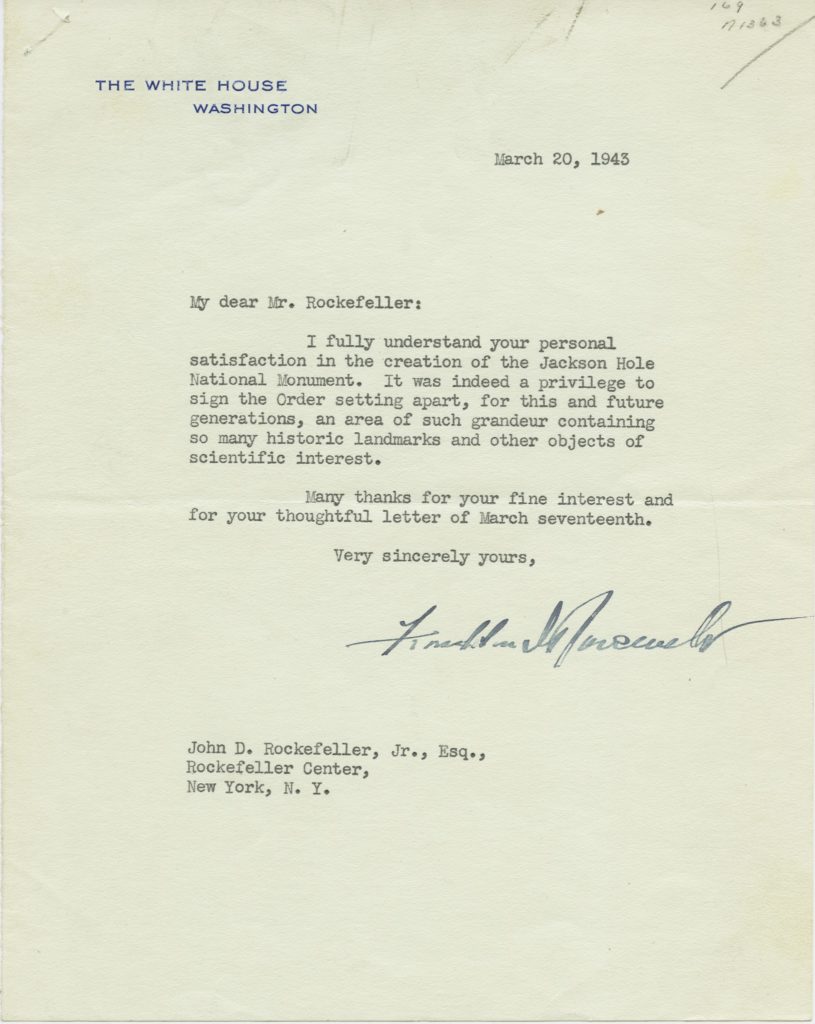
Roosevelt’s action inflamed local sentiment. Wyoming senator Edward Robertson compared the president’s action to the attack on Pearl Harbor. Representative Frank Barrett introduced a bill to abolish the monument (which Roosevelt then vetoed). The State of Wyoming sued the NPS for violating its states’ rights and seizing Jackson Hole without demonstrating its historic or scientific value.WYOHistory: A Project of the Wyoming Historical Society, “The Establishment of the Grand Teton National Park”; National Park Service, “Creation of Grand Teton National Park.”
A Final Resolution
Seven years later, a resolution emerged when local stakeholders, persuaded by a rise in tourism to the Jackson Hole area after World War II, agreed to a new, 310,000-acre Grand Teton National Park. Established formally by President Truman in 1950, the new park merged the original 1929 Grand Teton Park with the 1943 Jackson Hole National Monument. Afterwards, Rockefeller maintained a close connection to the area. He continued to buy and donate additional land to the park until his death, and made frequent summer trips to the region.National Park Service, “Creation of Grand Teton National Park”; Raymond B. Fosdick, John D. Rockefeller, Jr.: A Portrait (New York: Harper and Brothers, Publishers, 1956), 315-16.
Ranchers’ opposition to the 1943 monument had a lasting impact: in exchange for including the Jackson Hole land within the new Grand Teton National Park, lawmakers agreed to prohibit future presidents from using the Antiquities Act in the state of Wyoming. Today, a new round of debates has emerged over the scope of that law.High Country News, “Reckoning With History: The Antiquities Act Quandry.”
Further Reading
- Thomas A. Krianz, “Rockefeller Archive Center Research Reports, 2020 Observations on John D. Rockefeller, Jr.’s and the Rockefeller Foundation’s Involvement with Colorado’s Work-Relief Program.” Rockefeller Archive Center Research Reports, 2020.
- Diane M. Sanders, “Jackson Hole Wildlife Park: An Experiment to Bridge Tourism and Conservation” Rockefeller Archive Center Research Reports, 2019.
- Elizabeth Engle, “Cultural Resources in a “Natural” Park: Early Preservation Efforts at Menor’s Ferry in Grand Teton National Park.” Rockefeller Archive Center Research Reports, 2013.
- Elizabeth Engle, “Colter Bay Village: Understanding the Historic Significance of the Recent Past in Grand Teton National Park,” Rockefeller Archive Center Research Reports, 2010.
- David Stradling, “The Hudson River and the Boundaries of Environmentalism.” Rockefeller Archive Center Research Reports, 2008.
- Laurie Hinck, “Intersections and Detours: Tracing Standard Oil’s Trails through Grand Teton National Park” Rockefeller Archive Center Research Reports, 2008.
Related
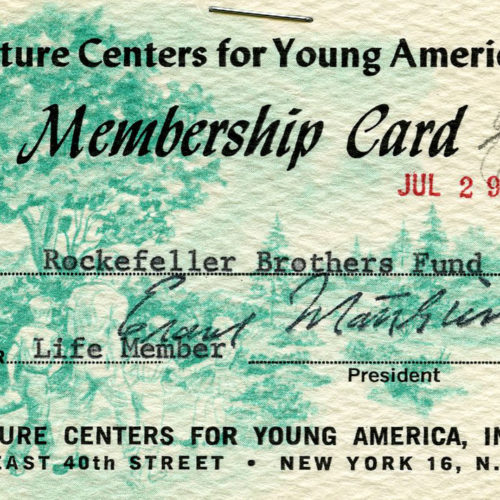
The Rockefeller Brothers Fund Supports Modern Environmentalism
Environmental education was once an unusual idea. The Audubon Society changed that and became the household name it is today.
